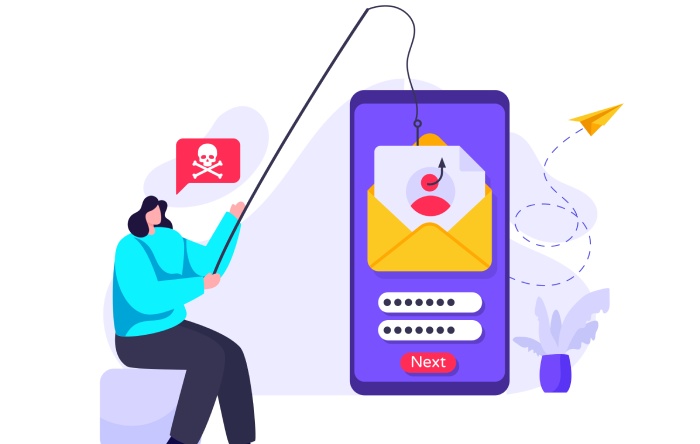2020 was a roller-coaster ride for most individuals and businesses, and everyone had to adapt to a new normal. The most notable change was in the way we work. While businesses started work from home policies, individuals started relying on electronic modes of transactions and communications. The increasing reliance on emails, unsurprisingly, led to a considerable hike in the number of email-based cyberattacks. While businesses are becoming more informed about the advantages of maintaining a robust cybersecurity posture, they are ignoring email security. This article will persuade them otherwise.
Email Security Predictions for 2021
Experts predict the following changes in the email security threat landscape in 2021:
- A Rise in thread hijacking: Thread hijacking is a technique in which cyber-criminals use existing email conversations with users to spread to new victims. They access the email threads on compromised computers and inject themselves into the threads to ask the victims to open a compromised Word document or open a malicious link.
- Remote image-based threats: Malicious actors build on and replicate the success of image manipulation techniques, which by-pass the email filters. They are now utilizing remote images to store and inject malicious textual content, thus pushing the email security filters to their limits.
- New opportunities in compromised accounts: Compromised accounts form the core of thread hijacking attacks mentioned earlier. Cybercriminals are using them in smart ways to launch massive spam waves.
- The global outreach of Business Email Compromise: The difficulty in detecting and the rising number of business email compromise (BEC) and spear-phishing attacks have made developers aware of the need for advancements in the content analysis technology using AI. However, there are still some limits to this; for instance, the latest algorithms fail to detect BEC attacks in foreign languages.
- Rising vendor impersonation in cloud services: Most business employees are accustomed to receiving emails containing PowerPoint, Excel, and Word attachments or an invitation to collaborate through Microsoft 365 documents. Since they trust these Microsoft or other cloud services, an email with an attachment always piques their curiosity. Thus, they become prone to vendor impersonation, involving a cybercriminal impersonating the supply chain.
Email Security Best Practices for 2021
These best practices for businesses will help executives protect their organization’s email accounts against email-borne risks, for example, malicious attachments and spoofing attacks.
Cybersecurity Awareness Training for Employees
Cybersecurity awareness is an often overlooked but critical aspect of a robust cybersecurity strategy. Every employee of the organization, regardless of seniority, must receive comprehensive awareness training. The continually evolving email-based threats require employees to understand how these threats operate and how they can be mitigated. Employees must be trained in quick and robust response measures if they receive a suspicious or malicious email. Additionally, they must be aware of the advantages of outbound SMTP and MX backup. Businesses must incorporate these tips into their training sessions
- The advantages of maintaining separate personal and business email accounts.
- Vulnerabilities in accessing business emails from mobile devices.
- Importance of regularly updating email passwords.
- Importance of maintaining complex and unique passwords.
Ensuring Password Security
Strong passwords act as the primary line of defense against unauthorized access to sensitive data and cybercrime. But they are as strong as the users make them. Businesses can take several steps to ensure that the passwords are secure and robust. They can implement a password policy for their employees to understand the importance of strong passwords and how weak passwords can create vulnerabilities in the network. The password policy must include the following guidelines
- Reset passwords regularly.
- Ensure that employees set unique passwords and do not use them across multiple platforms.
- Ensure that employee passwords do not contain personal information (names, birthdays, etc.) or everyday phrases.
- Ensure that the passwords include uppercase and lowercase letters, symbols, and numbers and are at least eight characters in length.
- Discourage password sharing
- Encourage the employees to store their passwords securely (a password management solution that has advanced encryption.)
Developing a Cybersecurity Plan
Organizations must include password policy as an integral part of the broader cybersecurity strategy. A well planned and comprehensive cybersecurity plan will safeguard the enterprise from numerous risks and threats lurking online. Businesses must account for email-borne threats when designing their cybersecurity policy. They must include guidelines, policies, recommendations, and requirements for employees to implement and use different technologies in the business environment, including email-based communication channels. Email-based phishing protection solutions must include email hosting, email archiving, and email forwarding.
Implementing a robust cybersecurity plan becomes crucial because even the most successful organization with the best email security practices is vulnerable to threats in other areas.
Using an Antivirus Solution
Most enterprise anti-phishing service providers offer email scanning and filtering functionality for websites and files. These functionalities help businesses identify the email-borne threats proactively and respond promptly to reduce their devices’ probability of getting infected. Businesses must set up their antivirus solution to work with their email proxy/relayer to scan the business emails and filter out suspicious or malicious ones to ensure that the employees never receive them.
Implementing Email Security Solutions
Other than robust antivirus software, businesses must implement comprehensive email security tools. These tools will help them detect and safeguard against targeted threats and reduce the likelihood of human error leading to BEC. A robust solution also provides an identity monitoring tool that can reduce response time through early warnings, prevent account takeover, monitor multiple domains, and notify IT, security teams if there are exposed credentials.
Final Words
Most organizations have adapted to the new normal of work from home thanks to the COVID pandemic. In 2021, most of them are not likely to shift to onsite work anytime soon. While they have become efficient in work from home after an initial adjustment phase, they need to ask themselves, have they transitioned their email security to suit the home environment?


